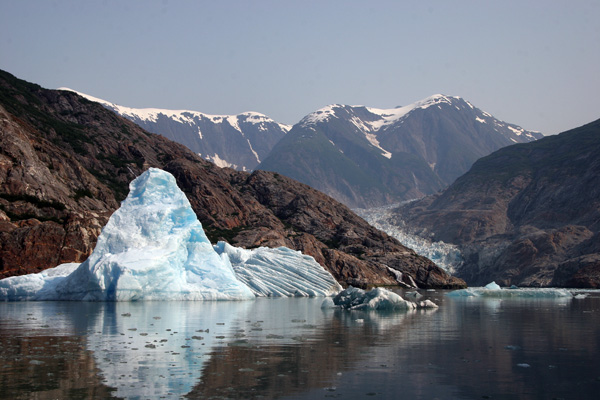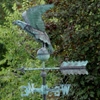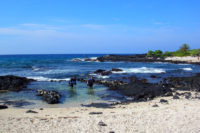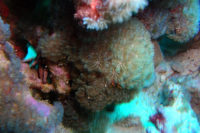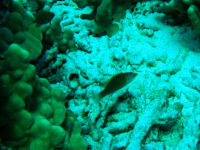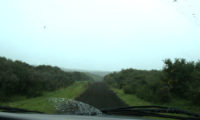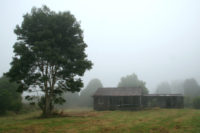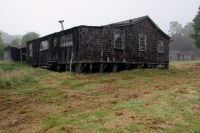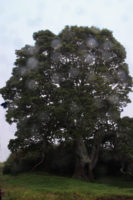What an awesome way to go whale watching!!!! Okay. So…it was quite early to get up on a Saturday; but it was sooooo worth it! Just after New Year’s, Andy registered us to participate in the 2010 Santuary Ocean Count on January 30, coordinated by the Hawaiian Islands Humpback Whale National Marine Sanctuary. Check out the many links and bushel loads of information that they provide on their site.
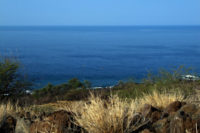
“Bright” and EARLY on Saturday morning, January 30, we met the group at Kawaihae harbor (about 7:00am) and consolidated some vehicles then proceeded to the site that we signed up on for the Ocean Count. The site had a GREAT 180 degree view from north to south of the Kohala coastline near Kawaihae on the Big Island of Hawai`i!
We all signed in and gathered the papers that we would need for recording the Humpback Whale (Megaptera novaeangliae) data. This was to include a tally for the # of adults and the # of calves in each pod, and a tally for each time one of several behaviors were exhibited during each half-hour increment from 8:00am to 12:00pm. Followed by one final count-only period from 12:00pm to 12:15pm.
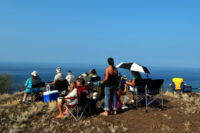
We all got settled in our chairs. We got our paperwork with writing implements, and our binoculars close at hand…and…at 8:00am began the count. Working in pairs, one would call out location, how many in the pod, and behavior observed; and the other would rapidly mark the tallies in the correct box on the paper. There was a lot of activity during the full four hours, and the time flew by! The Humpback were numerous and active on our west coast shoreline!
We seldom had opportunity to just sit back and talk story; but we did get some casual conversation inserted into the very occasional lull. Captivating conversation at that! This made the time pass by even faster. The lowest number of whale spotted from our site in any half-hour block during the count was about 11 adults. The calves were rare early in the count and then reached a count of four in two or three of the mid-count time slots.
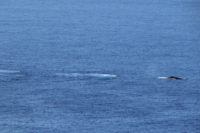
Near the end of our count (about 11:00 or 11:30), we all became a bit unsettled to observe two vessels that appeared to be commercial operations, display actions as though they were pursuing a pod of five Humpback Whale that were moving toward the north point of the Island (it looked like they were traveling in the direction of Maui). They presented as though they were pursuing the pod of five thus making the Whales increase their speed to stay out of range of the boats.
The vessels operators could have moored their boats anywhere along the coastline in the general area and seen a much more rewarding show as well as not having made the impression of stressing the large pod as it appeared that they did, and possibly causing any calves to get dangerously left behind!
We also watched as a small speed boat that was too near the shore tear over a lone Humpback that unexpectedly surfaced in its path. The boatman made little effort to observe to see if the whale was injured by the encounter, and we watched it tentatively while we finished our day’s count to observe if it was badly injured or just jostled and disoriented. It appeared to recover and begin to play in the water again. This left us with a feeling of relief as we gathered up our belongings, and cleared the site.
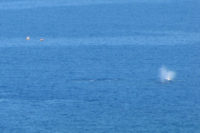
Setting aside the irksome few vessels traversing the Kohala coastline after helping to make a few notes of the boats’ actions, I focused my attentions back on the whale count.
Over all, the Ocean Count was a fantastic experience! There were several conscientious boats in the water as well. Like the kayaking fishermen who got a surprisingly good show! The numerous animals exhibiting an impressive show of behaviors were awesome! Behavior we observed included breaching, diving, fin slapping, spy hopping, numerous blows, and more… (<–this link is to a picture PDF).
It was particularly attention grabbing when a mother was teaching her calf how to do some of these behaviors! The calves appeared to try very hard and would sometimes repeat a behavior several times before changing to another. We even observed a pod of approximately 20 spinner dolphins skimming through our observation area heading in a northerly direction! They looked to be having a great time, completely undaunted by the number of Humpback in the area! 🙂
Even in Alaska, while I did see a larger number of whale once or twice, I do not believe I observed so many behavior patterns in so little time. The process of watching for specific behaviors and counting each occurrence of each behavior made me ‘see’ more of the whales and what they were doing than I had observed while simply watching the whale and madly firing my camera shutter for the pictures.
I WILL make an effort to participate in this event again! And NEXT time, I WILL remember the sun block since I seem to wear my dive skin and/or wet suit so often that I forgot to protect my sun deprived legs when I wore my shorts for the Whale count event :-O Eeeee Youch!!!!! Nope. No pictures of that part of my day. Too embarrassing to feel that much like a tourist again… 😉
Darkerview.com also posted on this volunteer opportunity! — search “Whale Count”>
